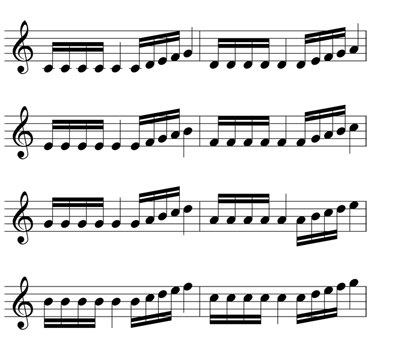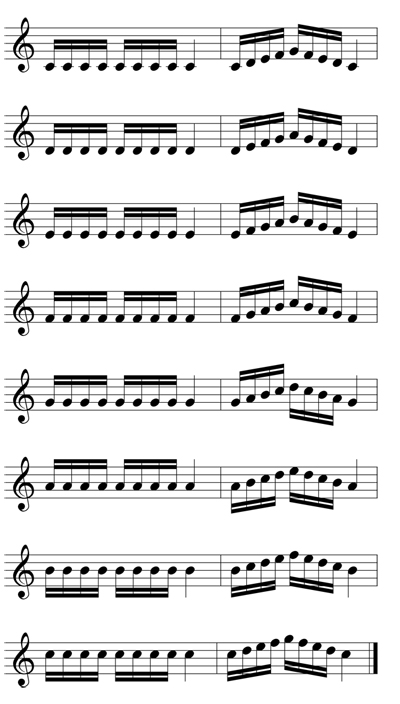Articulation is one of the most difficult aspects of clarinet playing to teach because the tongue is inside the mouth and not visible to the teacher, which is why so many clarinet players develop bad articulation habits. The key to an effective articulation can be summed up in the words tip-to-tip: the tip of the tongue should just touch the tip of the reed.
Tip-to-tip articulation should use the least amount of surface of the tongue as possible; only the tip of the tongue should move. Any motion in the throat or jaw indicates movement in the back of the tongue. This slows the articulation and diminishes the tone quality. I find that the syllables tee, dee, and lee keep the back of the tongue motionless during articulations. I especially like lee because it maintains an ee voicing and promotes a light, legato sound.
Unless students learn these principles from the beginning, they will likely resort to anchor tonguing, in which the middle of the tongue contacts the reed, and the tip of the tongue is anchored behind the bottom front teeth, which is a dismal habit to break. With practice, some students can still produce a good sound despite anchor tonguing, but they cannot articulate quickly. Only tip-to-tip articulation should be used. One way to diagnose anchor tonguing is when the chin moves in a chewing motion and there is a hard articulation at the beginning of each note.
A slow-motion exercise can retrain the tongue for tip-to-tip articulation. The plus signs indicate lightly leaving the tip of the tongue on the tip of the read to produce a fuzzy sound.

At first the tongue will feel a tickling sensation due to the vibration of the reed, but over time this will diminish. Moving from half notes to quarters, eighths, and 16ths simulates tonguing in slow motion. Upon reaching the 16th notes, the articulation should sound lighter.
After the tongue speed is correct, strengthening exercises are required to build endurance and speed. In the following rhythm, the eighth note helps the tongue relax while the two 16ths cause the muscle to contract, like the arms during push-ups. This rhythm can be applied to scale exercises and is used in a popular etude on page 22 of the Langenus Clarinet Method.

Once tongue speed is developed, practice lining up the tongue with the fingers; although repeated notes occur at times, quick scales and arpeggios are far more common. The following two exercises coordinate the tongue and the fingers using short bursts of four or eight 16th notes.

_______________________

Whether students enjoy fast passages or find them difficult, clarinet music often requires a fast tongue. Just as athletes rely on daily exercises, clarinetists should condition their tongues through these daily warmup regimens.






